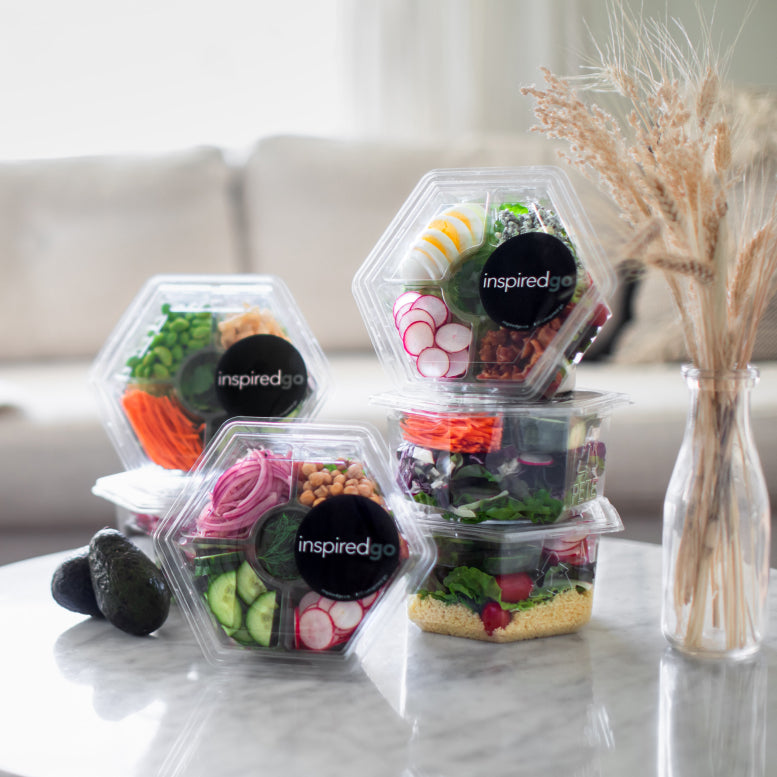Is Caesar Salad Healthy?
Table of Contents
1. The Nutritional Profile of Caesar Salad
2. Is Salad Good for You?
3. How Many Calories in Chicken and Salad?
4. Why Is a Healthy Diet Important?
1. The Nutritional Profile of Caesar Salad
While a traditional Caesar salad can offer certain nutritional benefits, its healthiness largely depends on the ingredients used and portion sizes. Caesar salads usually contain lettuce, croutons, Parmesan cheese, and a dressing made from lemon juice, egg yolks, anchovies, garlic, Dijon mustard, and olive oil. This combination provides a good source of vitamins A and C from the lettuce, while the Parmesan cheese offers calcium and protein. However, the dressing and croutons can be high in calories and fat, especially if consumed in large quantities. Therefore, to make a Caesar salad healthier, you could opt for a low-fat dressing, add in more vegetables for added fiber and nutrients, and control portion sizes. It’s also worth noting that premade or restaurant versions of Caesar salad can vary significantly in their nutritional content, so it's essential to check the nutritional information where possible.
Order fresh salads today →


2. Is Salad Good for You?
Salads are among the healthiest meal choices, offering a wide variety of essential nutrients in every bite. Packed with leafy greens, colorful vegetables, lean proteins, and healthy fats, salads provide vitamins, minerals, and antioxidants crucial for overall health. They are naturally high in fiber, which supports digestion and promotes feelings of fullness, reducing the likelihood of overeating. Salads can also be customized to include protein-rich ingredients like grilled chicken, chickpeas, or tofu, making them balanced and satisfying. Dressing choices play a significant role in salad healthiness, with olive oil-based or yogurt-based dressings offering healthier alternatives. Salad delivery services simplify incorporating these nutritious meals into daily life, ensuring consistent access to fresh, wholesome ingredients without extensive preparation.
Choose your salads and schedule delivery →
3. How Many Calories in Chicken and Salad?
Chicken salads are a popular meal option, combining lean protein with fresh vegetables for a balanced, satisfying dish. The calorie count in a chicken salad depends on factors like chicken preparation, dressing choice, and additional toppings. Grilled chicken typically adds fewer calories compared to fried or breaded chicken. A standard grilled chicken salad usually contains between 300–500 calories, while creamier dressings and fried chicken can push calorie counts higher. Salad delivery services provide clear nutritional information, allowing customers to make informed choices about their orders. With options to customize salads—such as choosing low-calorie dressings or extra vegetables—customers can easily tailor their meals to fit their dietary goals.
Get fresh salads and snacks delivered →
4. Why Is a Healthy Diet Important?
Inspired Go believes that a healthy diet is the foundation for physical and mental well-being, and their salad delivery service is built on this philosophy. Every salad is designed to provide balanced nutrition with essential vitamins, minerals, fiber, and protein. Inspired Go emphasizes the importance of fresh, locally sourced ingredients to ensure maximum nutrient retention and flavor. By offering pre-portioned, nutrient-dense meals, Inspired Go makes it easier for customers to consistently make healthy choices without the hassle of meal prep or calorie counting. A healthy diet supports better digestion, sustained energy levels, improved focus, and a stronger immune system. With Inspired Go’s convenient and delicious salads, adopting and maintaining a healthy diet becomes both achievable and enjoyable for everyone.
Try our fresh, ready-to-eat salads →
Frequently Asked Questions
The most nutritious salad greens are dark leafy varieties like spinach, kale, and arugula. These greens are packed with essential vitamins, including A, C, and K, as well as minerals like calcium and iron. Kale is particularly rich in antioxidants, while spinach offers significant amounts of folate and magnesium. Choosing a mix of dark greens enhances both the flavor and nutritional value of your salad.
A healthy salad includes a balance of nutrient-dense ingredients like leafy greens, fresh vegetables, lean proteins, and healthy fats. For example, a base of spinach and kale, paired with grilled chicken, cherry tomatoes, avocado, and a light olive oil dressing, creates a wholesome meal. Avoid fried toppings or sugary dressings, as they add empty calories, and opt for natural ingredients to maximize nutrition.
Yes, eating salad daily is a healthy habit when it includes a variety of fresh, nutrient-rich ingredients. Salads offer fiber for digestion, antioxidants for immunity, and essential nutrients like potassium and folate. Regularly eating salads can support weight management and improve energy levels. To avoid monotony, vary your greens, proteins, and toppings to keep meals satisfying and nutritionally balanced.
Healthy salad dressings are typically made with simple, natural ingredients. Olive oil-based dressings, paired with balsamic vinegar or fresh lemon juice, provide healthy fats and enhance flavor without unnecessary calories. Avoid store-bought dressings with high sugar or preservatives. For a creamy alternative, opt for homemade dressings using Greek yogurt or avocado for added nutritional benefits.
Yes, salads are incredibly beneficial for overall health when prepared with fresh, whole ingredients. They are low in calories and high in vitamins, minerals, and antioxidants, supporting heart health, digestion, and immunity. Adding a mix of proteins and healthy fats creates a satisfying, nutrient-dense meal. Regularly incorporating salads into your diet can promote long-term well-being and energy.

